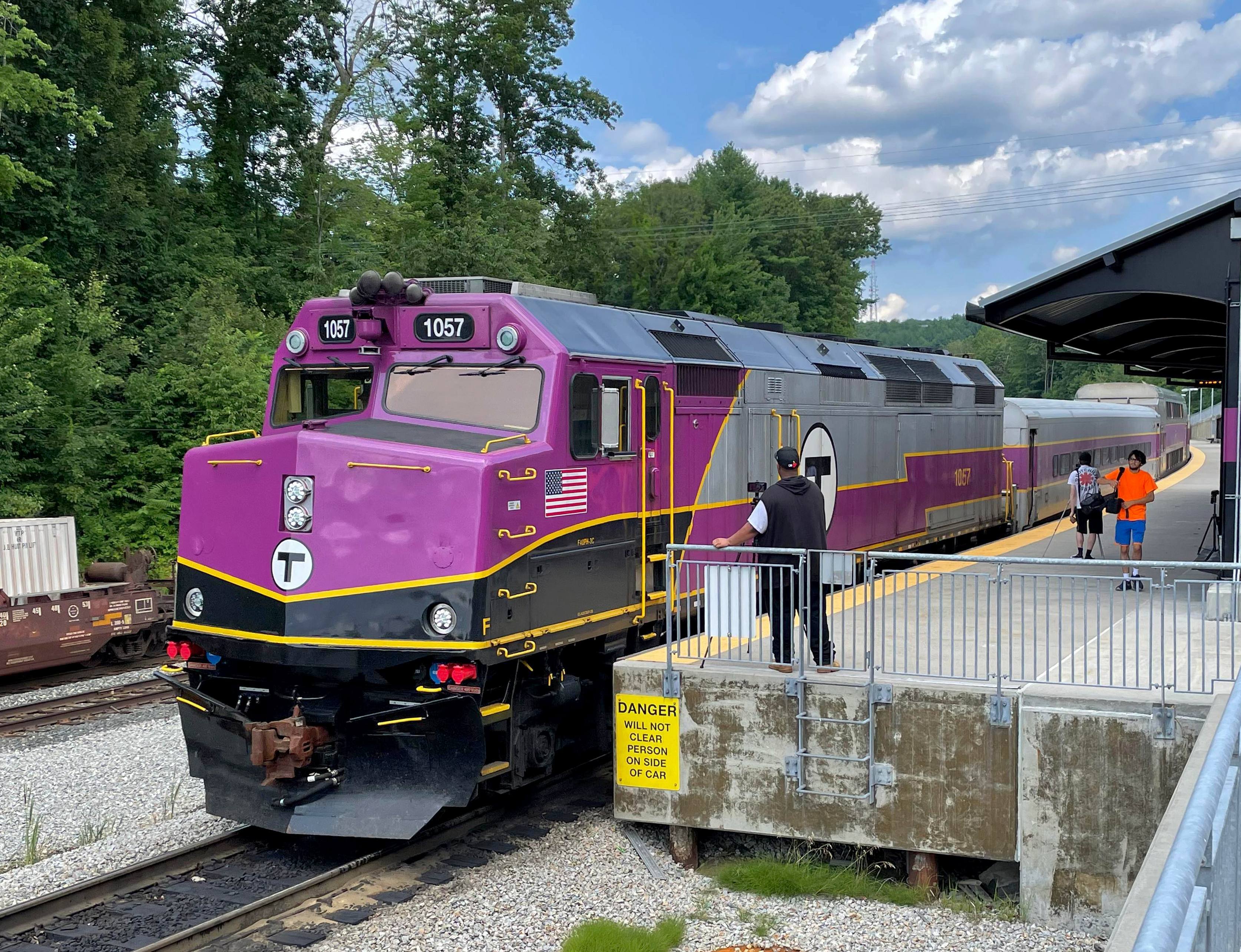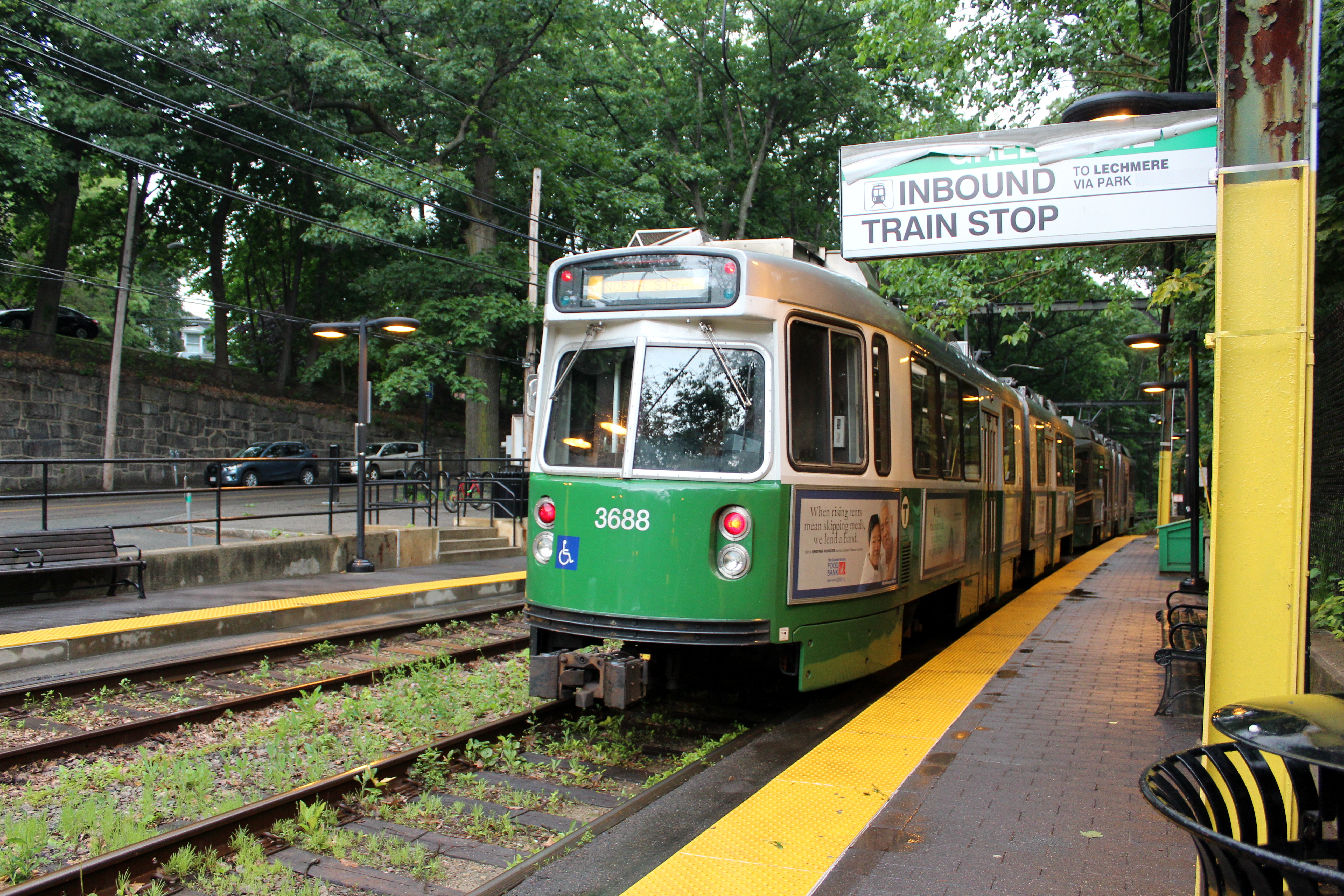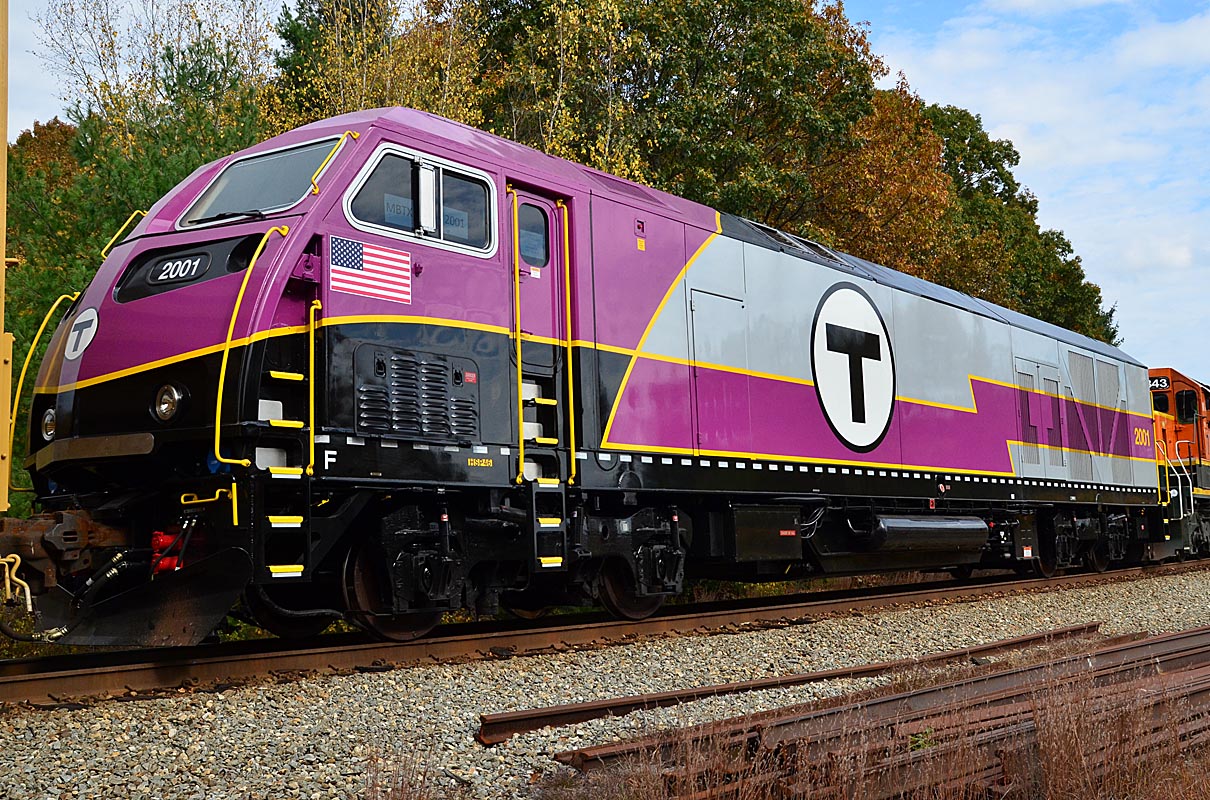Understanding MBTA Accidents: Keeping Commutes Safe
The daily rhythm of life in and around Boston often moves along with the Massachusetts Bay Transportation Authority, or the MBTA. It's a system many people depend on, carrying folks to work, school, and all sorts of places across the region. When something goes wrong on the trains, the subways, or the buses, when there's an incident involving the MBTA, it really gets people thinking. These events, often called an MBTA accident, bring up concerns about how safe our rides are and what might be done to make things better for everyone who uses public transit. So, it's almost natural to want to know more when these things happen.
People who rely on the MBTA, whether it's the commuter rail, the light rail, or the subway lines, feel the impact directly when there's a problem. A delay can mess up a whole day, and an accident, well, that's a much bigger deal. There's a lot of talk that happens around these situations, especially when we look at webcams showing the lines or discuss hypothetical maps of the system. These conversations often circle back to how the MBTA operates and what steps are being taken to keep everyone secure on their travels.
It's important to talk about these things openly. Knowing what goes into keeping such a large system running, and what challenges the MBTA faces, helps us all get a better grasp of the situation. We'll look at why these incidents matter, what steps are being put in place to prevent them, and how the public plays a part in this ongoing effort to make every journey as safe as possible. This way, we can, you know, understand the big picture a bit better.
- Nia Vardalos Naked
- Eugenio Derbez Relationships
- Pitbull Concert Slc
- Celebrity Christmas Outfits
- Avie Lee Owens Siblings
Table of Contents
- The MBTA: A Vital Connection
- What Happens When an MBTA Accident Occurs?
- Safety Measures and Ongoing Efforts
- Public Discussions and System Insights
- What to Do and How to Stay Informed
- Frequently Asked Questions About MBTA Incidents
- Looking Ahead for Safer Rides
The MBTA: A Vital Connection
The Massachusetts Bay Transportation Authority, or the MBTA, is a really big part of how people move around in and near Boston. It runs a whole lot of different services, including the commuter rail, which takes people from farther out towns into the city, and then there's the light rail, like the Green Line, and the subway system, which has the Red, Orange, and Blue lines. All these parts work together to create a network that, like, millions of rides happen on every year. It's quite a complex setup, honestly.
For many, the MBTA is not just a choice; it's the only way to get where they need to go. Students use it for school, people use it for their jobs, and visitors use it to see the sights. So, when there's an MBTA accident, it’s not just a news story; it affects real people's lives. It can mean delays, missed appointments, and, in some cases, very serious outcomes for those involved. That's why discussions about its operations, like those around old MBTA system maps and schedules, often bring up how important reliability and safety are.
The system has a long history, going back many years, and it has grown and changed a lot over time. There are always conversations about how it could be better, how it could be safer, and how it could run more smoothly. People often share ideas, sometimes even creating hypothetical T maps on places like Reddit, showing what they wish the system could be. These ideas, while not always practical, show how much people care about their public transit.
- Leo Virgo Ascendant
- Godzilla Minus One Oscar Shoes
- Bride Groom Dress For Engagement
- Lauren Wagner Hillside Strangler
- Texas Teacher Arrested
Maintaining such a large and old system comes with its own set of challenges, you know. There's track to keep up, trains to fix, and signals to make sure they work right. All these things play a part in the overall safety of the system. When an incident happens, it often brings these maintenance needs and operational aspects into sharper focus for everyone.
What Happens When an MBTA Accident Occurs?
When an MBTA accident takes place, it sets off a series of actions. First and foremost, the immediate concern is always the well-being of anyone involved. Emergency services usually respond very quickly to the scene. This could mean police, fire, and medical teams arriving to help people and make sure the area is secure. It's a pretty intense situation, you know, when something like that happens.
After the initial response, there's a thorough investigation that begins. This investigation tries to figure out exactly what happened and why. It looks at a lot of different things, like the condition of the tracks, how the equipment was working, what the operators were doing, and even the weather conditions at the time. This process can take a while, and it involves many different groups working together to piece everything together. Basically, they want to get to the bottom of it.
The impact of an MBTA accident goes beyond just the immediate scene. There are often service disruptions, meaning trains or buses might be delayed, rerouted, or even stopped entirely. This can cause a lot of inconvenience for thousands of commuters who depend on the system for their daily travel. People might have to find other ways to get around, which can be pretty frustrating, you know, especially during peak travel times.
Then there's the public reaction. News travels fast, and people want to know what happened, if everyone is okay, and what the MBTA is doing about it. This is where discussions on social media and news sites really pick up. People talk about past incidents, and they wonder about the overall safety of the system. It's a very public event, in a way, even if it happens out of sight.
These incidents also bring about a lot of discussion about the system's infrastructure. People often wonder if the tracks are old, or if the trains are past their prime. It's a conversation that has been going on for some time, and it tends to get louder after an accident. This helps to put pressure on the people in charge to make improvements. So, in some respects, it's a call to action.
Safety Measures and Ongoing Efforts
The MBTA, like any large transportation system, has many safety measures in place. These are designed to prevent incidents and to handle them effectively if they do happen. There are strict rules for how trains operate, how tracks are maintained, and how equipment is inspected. It's a very detailed system of checks and balances, basically, to keep things running as smoothly and safely as possible.
One big area of focus is regular maintenance. This involves checking tracks for wear and tear, making sure signals are working correctly, and keeping the trains themselves in good condition. Sometimes, this work requires temporary service changes, which can be a bit of a hassle for riders, but it's done to keep everyone safe in the long run. It's an ongoing process that never really stops.
Another important part is technology. The MBTA uses various technologies to monitor the system and help prevent collisions. This can include automatic train control systems and communication tools that help operators stay aware of what's happening on the tracks. These systems are always being updated and improved, which is pretty good, honestly, for safety.
Training for MBTA staff is also a very big deal. Operators, maintenance crews, and other personnel go through extensive training programs. They learn how to handle normal operations, and also what to do in emergency situations. This helps ensure that people on the ground know how to respond quickly and correctly if an MBTA accident or other issue arises. It's about being prepared for anything, you know.
Following an incident, there are often reviews and audits of existing safety procedures. If a problem is found, changes are made to prevent similar issues from happening again. This continuous improvement process is vital for the long-term safety of the system. It’s a bit like learning from experience, and then making things better for the next time, which is important.
There's also a lot of discussion around funding for these safety improvements. Upgrading old infrastructure, buying new trains, and implementing new technologies all cost a lot of money. People often talk about how much investment is needed to bring the system up to modern safety standards. It's a conversation that involves politicians, transit officials, and the public, all trying to figure out the best way forward. You know, it's a big public works project, in a way.
Public Discussions and System Insights
The MBTA is a public service, so it makes sense that there's a lot of public discussion about it. People talk about everything from the daily commute to bigger issues like safety and future plans. These conversations happen everywhere, whether it's on social media, in local community meetings, or just among friends and neighbors. It's a very common topic, as a matter of fact, for people in the Boston area.
Sometimes, these discussions involve looking at things like webcams that show views of MBTA lines. People watch these to see if trains are running on time, or to get a sense of how busy things are. It gives them a real-time look at what's happening with commuter rail, light rail, and subway operations. This kind of transparency, you know, can be helpful for people who rely on the system.
There are also forums and online communities where people discuss hypothetical T maps or share old MBTA system maps and schedules. These discussions often show a deep interest in the system's history and its potential future. They can highlight ideas for new lines, better connections, or ways to improve service. It's a pretty active community of people who care about public transit.
When an MBTA accident occurs, these discussions become even more intense. People want answers, and they want to know what's being done to prevent future incidents. They share their own experiences and concerns, and they often push for greater accountability and faster improvements. This public pressure can be a very powerful force in bringing about change, honestly.
The MBTA itself often provides updates and information through its official channels. They use their website, social media, and public announcements to keep riders informed about service changes, investigations, and safety initiatives. It's their way of trying to keep everyone in the loop, which is important, especially when there's an issue.
Understanding these public discussions gives us a better sense of what matters to riders. It shows that people are very invested in the safety and efficiency of their public transportation system. These conversations, in a way, help shape the direction of future improvements and how the MBTA moves forward. Learn more about MBTA operations on our site.
What to Do and How to Stay Informed
If you find yourself near an MBTA accident, or if you witness one, the first thing to do is make sure you are safe. Your personal safety is the most important thing. If you are on a train or bus that is involved, follow the instructions of the operator or emergency personnel. They are trained to guide people through these situations, so listening to them is really important, you know.
If you see something that looks wrong or unsafe, it's always a good idea to report it. You can tell an MBTA employee, or use the official channels to report concerns. This could be anything from a suspicious package to a safety hazard on the tracks. Every bit of information can help keep the system safer for everyone. So, in some respects, you can help.
Staying informed about MBTA operations and any potential disruptions is pretty easy these days. The MBTA has a website with real-time service alerts for all its lines. They also use social media, like Twitter, to post updates very quickly. Signing up for text alerts can also be a good way to get immediate notifications about delays or incidents that might affect your commute. It's a good habit to check these things before you head out, basically.
When an accident happens, official sources are the best place to get accurate information. News reports will also cover major incidents, but it's always good to cross-reference with the MBTA's own statements. This helps you get the most reliable picture of what's going on and what to expect regarding service changes. You want to avoid rumors, obviously.
Being aware of your surroundings when you're using public transit is also a smart thing to do. Pay attention to announcements, look around, and if something feels off, trust your instincts. While MBTA accidents are not an everyday occurrence, being prepared and informed helps everyone feel more secure on their journeys. This helps you be a bit more prepared.
Also, if you are a regular rider, it might be a good idea to have a backup plan for your commute. Knowing an alternative route or another way to get to your destination can save you a lot of stress if there's an unexpected service disruption. It's just a practical step, you know, to make your daily travel a little smoother. You can also link to this page for more information.
Frequently Asked Questions About MBTA Incidents
Here are some common questions people ask about MBTA incidents:
What should I do if I am involved in an MBTA accident?
If you are involved in an MBTA accident, your first priority is your safety and the safety of those around you. Stay calm and follow any instructions given by the MBTA staff or emergency responders. Do not leave the scene until instructed to do so. If you are able, report any injuries to emergency personnel immediately. You might also want to exchange contact information with other witnesses, if it feels safe to do so, and cooperate fully with any investigation. It's a very important step, really, for everyone involved.
How can I find out about MBTA service disruptions?
The best way to stay informed about MBTA service disruptions is to check the official MBTA website or their social media accounts, especially Twitter. They provide real-time updates for all subway, bus, and commuter rail lines. You can also sign up for email or text alerts directly from the MBTA to receive notifications about delays or changes to your specific line. This helps you know what's going on, basically, before you even leave your house.
Who investigates MBTA accidents?
MBTA accidents are typically investigated by a combination of authorities. The MBTA itself will conduct an internal investigation. Depending on the severity and nature of the incident, federal agencies like the National Transportation Safety Board (NTSB) or the Federal Transit Administration (FTA) may also get involved. Local police and fire departments will also be on the scene for immediate response and initial reporting. It's a very thorough process, you know, to find out what happened.
Looking Ahead for Safer Rides
The ongoing conversation around MBTA accidents and safety is a very important one for everyone who lives in or visits the Boston area. It's clear that people care deeply about having a public transportation system that is reliable and, most importantly, safe. The discussions about webcams showing line operations, the hypothetical T maps, and the historical records of the MBTA all point to a community that is very engaged with its transit network. It's quite a unique situation, honestly, to have so much public interest.
Efforts to improve safety are continuous, and they involve a lot of different moving parts: from regular maintenance and technological upgrades to staff training and swift responses to incidents. While no system can be completely free of problems, the goal is always to minimize risks and ensure that every journey is as secure as possible for every rider. It's a big task, to be fair, for a system of this size and age.
The public's role in this is also quite significant. By staying informed, reporting concerns, and participating in discussions, riders help to keep the focus on safety and accountability. This collective effort helps to push for the necessary investments and changes that will make the MBTA even better in the years to come. So, in some respects, everyone has a part to play in making our commutes safer, which is pretty good, honestly.
As we move forward, the commitment to learning from past events and implementing new safeguards remains a top priority. The MBTA is always working to improve its operations, and the public's active interest helps to guide those efforts. It's a continuous journey towards a safer and more efficient public transit experience for everyone. This way, we can, you know, look forward to smoother rides.

MBTA F40PH-3C at Wachusett: The NERAIL New England Railroad Photo Archive

The MBTA • Boston - Inbound Destinations

First new MBTA locomotives enter service April 16 | Trains Magazine